IMAM (Romeo)
Ro-57
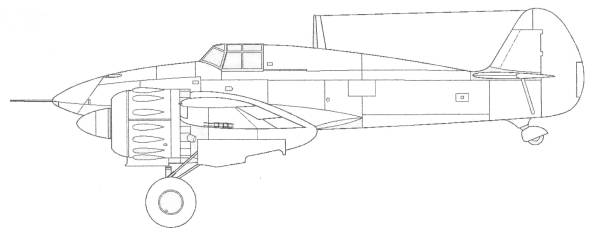
The Ro.57 was of an all-metal, semi-monocoque fuselage with a steel
skeleton and Duralumin structure. Sources were divided on the wings, some state wood others Duralumin.
Powered by two 840 hp (630 kW) Fiat A.74 radial engines giving a
maximum speed of 516 km/h, which in 1939 was better than that of the
main Italian fighter, the Macchi C.200 (504 km/h). After testing at
Guidonia it was proposed by IMAM for use as a dive bomber. This
transformation, which involved the addition of dive brakes, provision
for 500 kg bombs and an improved forward firing armament (adding two 20
mm cannon), took time and delayed production. The resulting aircraft
was designated the Ro.57bis. Performance dropped to 457 km/h maximum
speed and to 350 km/h at cruise speed. The Ro.57bis was ordered into
production in 1942 and entered service with the 97° Gruppo in 1943.
About 50-60 aircraft were delivered.
It is said that the Ro.57 could have been the long range interceptor
that Italy lacked throughout the war. It proved to be too costly for
the limited weapons it carried and it never was assigned a clear role.
The Kit
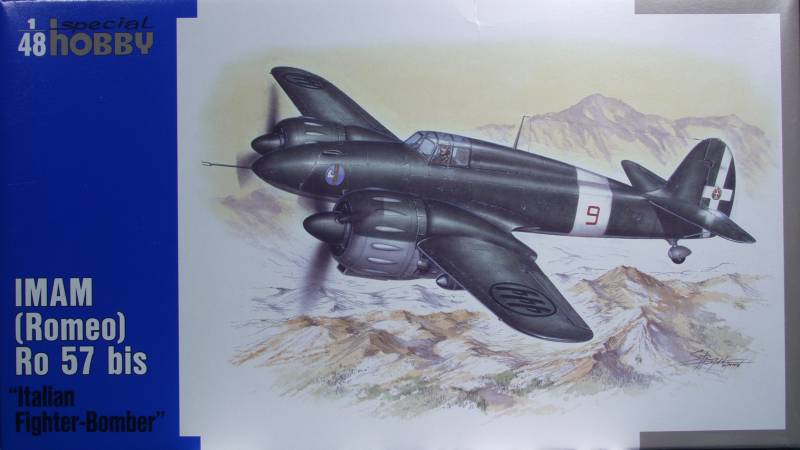
The Special Hobby kit comes in a top open tray type box with a light top and heavier bottom. Inside the box one finds one larger resealable bag with all the parts molded in gray, two small zip lock bags with resin parts and a small resealable bag with the clear parts. A small resealable sleeve contains the decals and a small fret of photo etch. Inside the large bag are three sprues of gray plastic. The parts are typical of short run kits with a matte finish a fair amount of light flash and no alignment pins to aid in assembly. In my opinion alignment pins are way over rated and in many cases are misalignment pins. In spite of the low pressure molding used on these the surface detail is quite nice with recessed panel lines and rivets and fastener detail. Also common with this style of kit are large sprue attachment points making clean up a bit more labor intensive. All of the control surfaces are molded in the neutral position and fabric detail is very restrained. My usual complaint about the control surface joint lines being too shallow applies here as well. Mold alignment appears to be pretty good and mold seams are better than some. Detaching and cleaning up some of the smaller parts will be a chore again due to the large attachment points. I found no obvious surface defects on any of the main airframe parts and I did not find any ejector pin marks in obvious places.
From a detail standpoint the cockpit is pretty complete with simulated tube framing and lots of small detail parts including some resin and photo etch. The instrument panel is done as a PE sandwich. The gear bays are partially enclosed but not a lot of detail there. The landing gear themselves are fairly complex affairs and could be a source of troubles if everything doesn't fit as shown. The wheels themselves are molded in halves and are not weighted. You have a choice of two different tail wheels depending which aircraft you chose markings wise. The engines are made up entirely of resin parts and would look quite nice, at least what you will see of them. The fit into (hopefully) to very nicely cast resin cowlings. The kit propellers are one piece which is some what unusual for Special Hobby. They do have a separate spinner and back plate. The kit comes with three bombs, one smaller one for under each wing and a larger one for the fuselage centerline which has a trapeze swing arm for the bomb to clear the propeller blade arcs. Lets look at the parts.
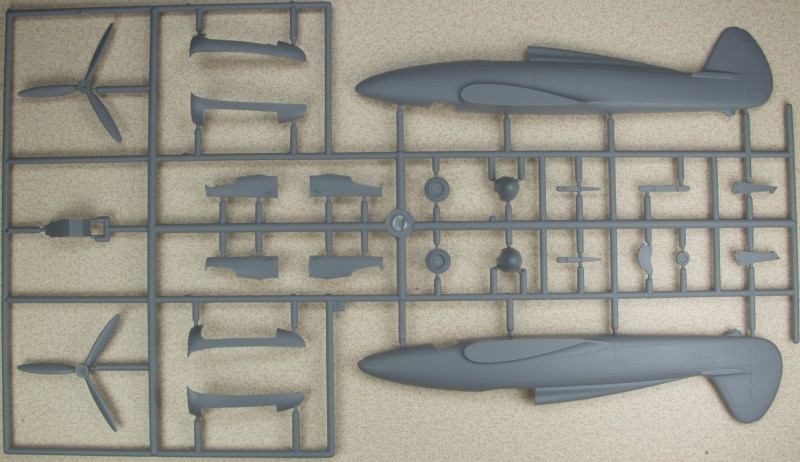
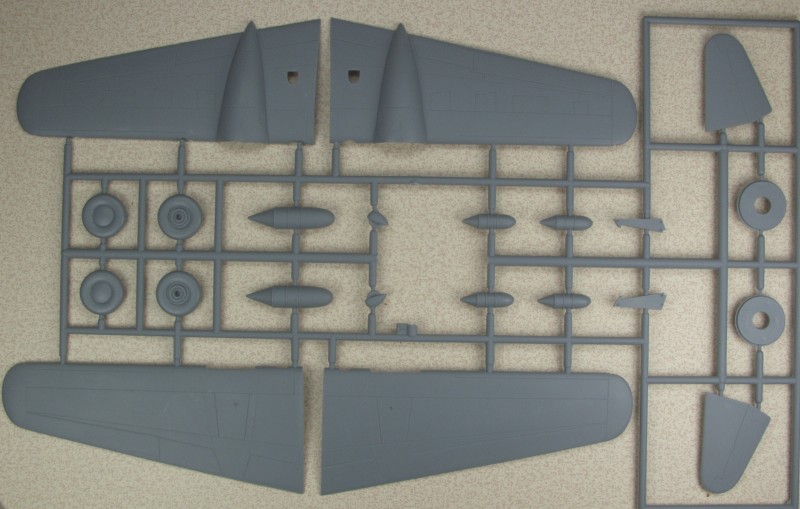
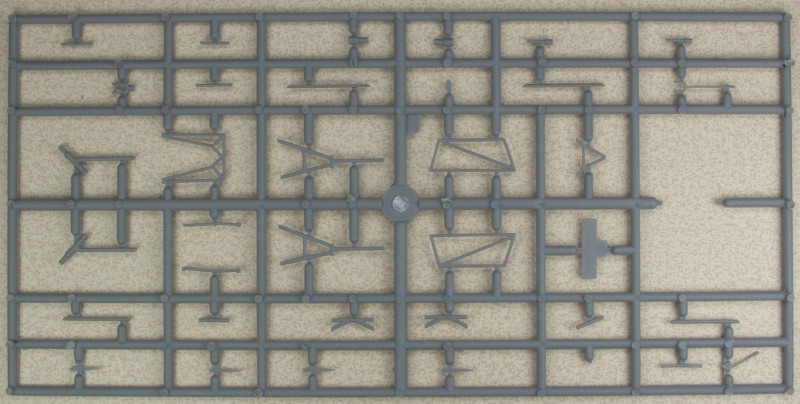
The two lovely resin cowlings.
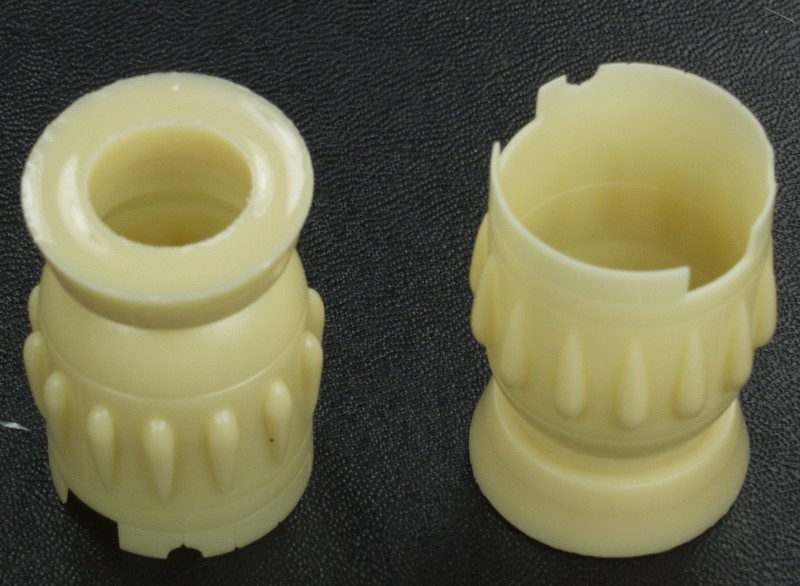
And the resin engine parts, bomb racks and some other detail bits.
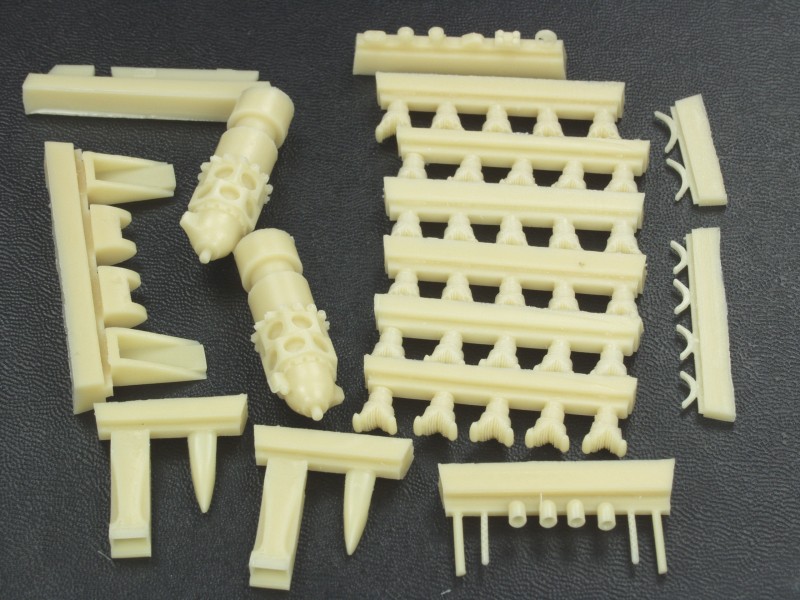
The photo etch parts which include the pilots restraints.
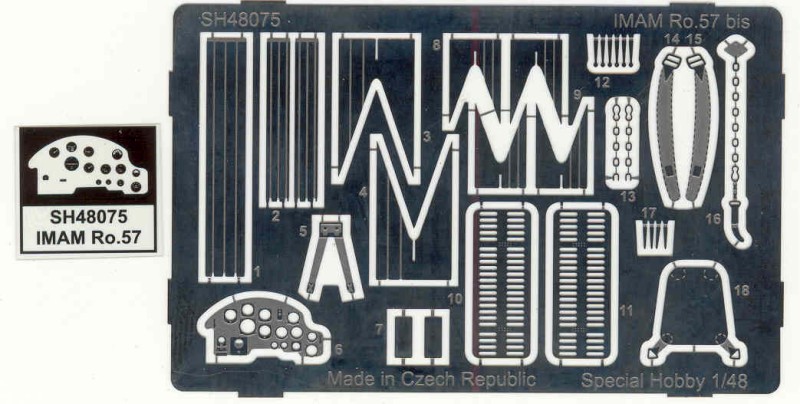
The clear parts are not real thin but still clear with nice raised frame detail.
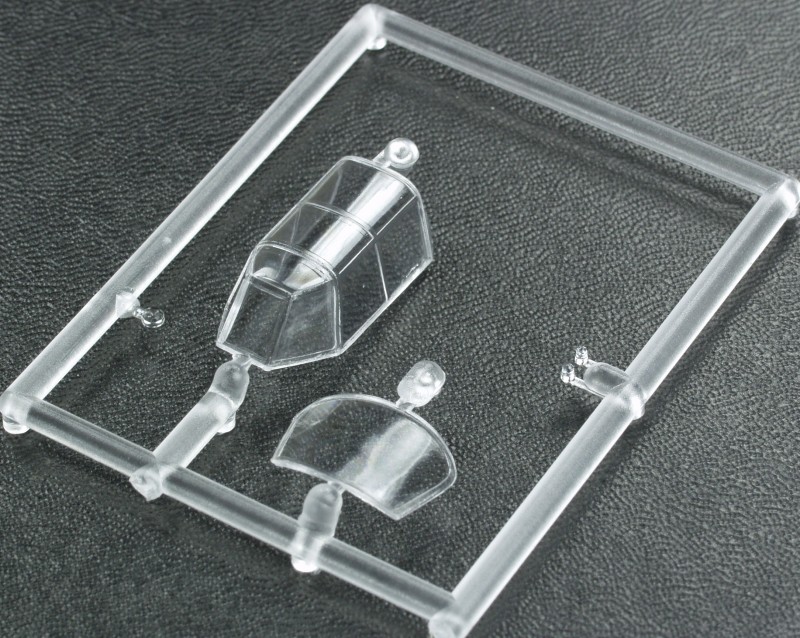
The decals are thin, appear opaque and in register. They were made by Aviprint and I have had good luck with these in the past. The sheet provides markings for three aircraft all in green over gray which is different from most other Italian aircraft of the period.
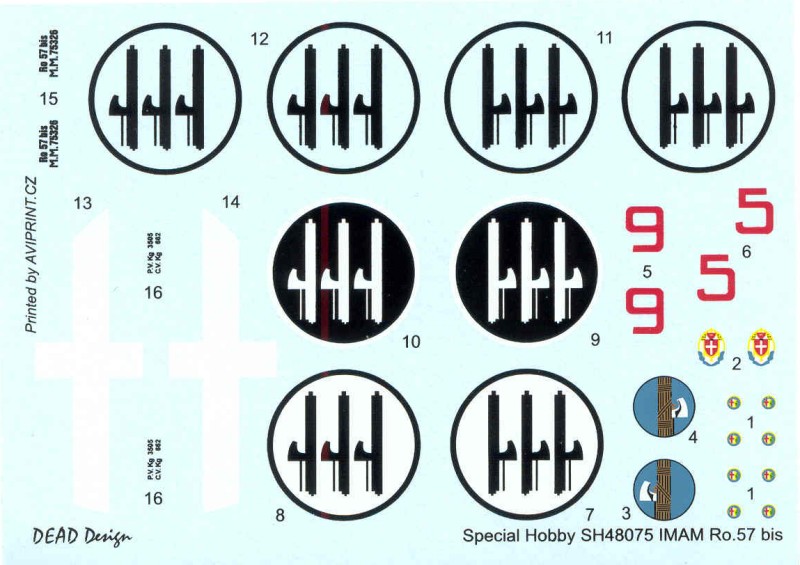
The instructions are pretty much standard fair for many Special Hobby kits, two and a half pages folded to make a small booklet, not stapled. A page of history in Czech and English, a parts map, icon chart and a paint chart with generic names and Gunze numbers, assembly diagrams in fourteen steps and three half pages of paint and marking diagrams.
After Market Goodies
I didn't find any but none are really needed.
Conclusions
This is actually a pretty nice limited run kit of a rather obscure Italian aircraft. While cleaning up the parts will be the hardest part of building and like all limited run kits one needs to test fit before gluing and expect there will be some things that don't fit like a Tamiya kit, it shouldn't be that hard to build. Recommended for modelers with a moderate amount of experience.
Links to kit build or reviews
An in box review can be found here
References